
There comes a time in the life of most homeowners when the question comes up of what to plant along a property line or fence.
Maybe you’re ready to plan the backyard sanctuary of your dreams or perhaps you simply want more privacy in your outdoor living space. Sometimes an event, such as a new development going up behind your house, prompts you to act. Other times, you might have an unsightly fence you would like to conceal.
In our case, we have old Leyland cypress trees along one side of our property line that are dying from age and repeated droughts. We need to plan their replacements before our home is left exposed to a busy road.
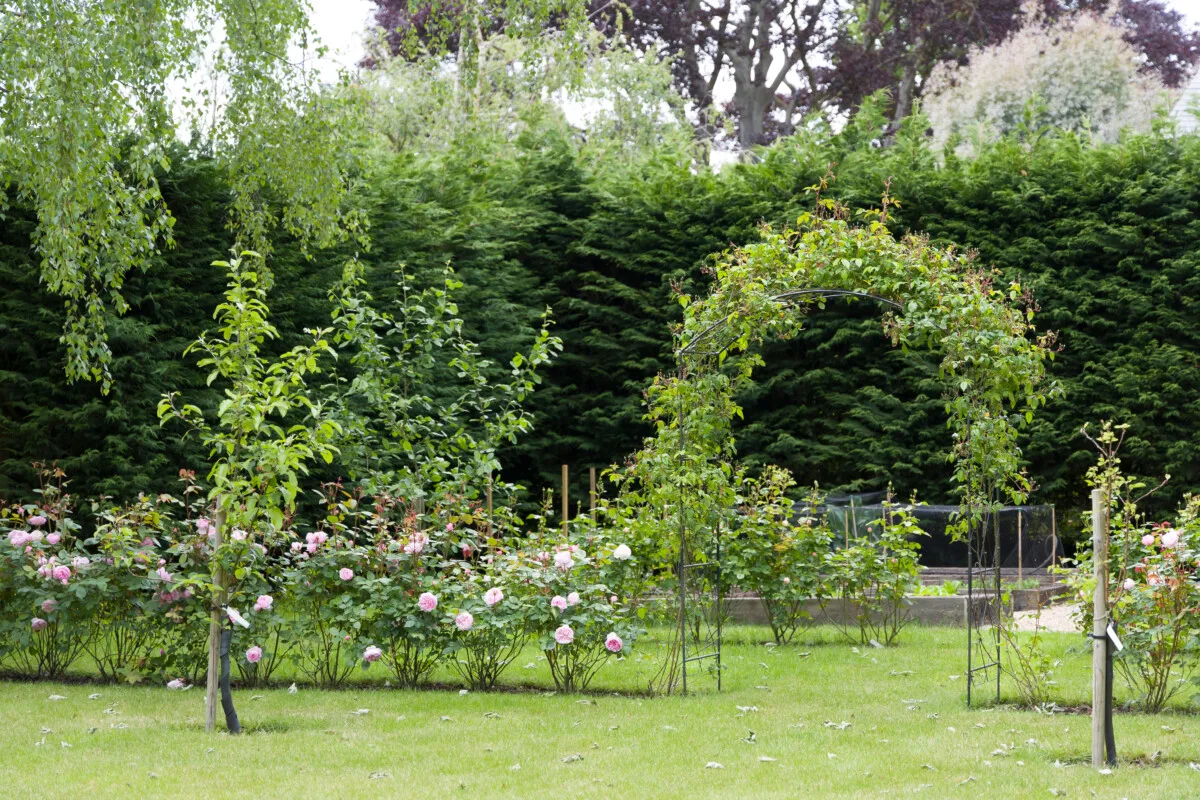
Whether you are planting for the first time or replacing existing plants, there are many choices to consider.
Do you need a quick, practical solution or are you looking for plants that will transform your backyard into a lush oasis over time? What types of plants are best-suited for your soil and climate? From shrubs and hedges to vining plants, I have compiled a list of nine garden favorites that are sure to meet your needs.
4 Things To Consider Before Planting Along A Fence
To decide which plants are best, there are a few considerations before planting along a property line or fence.
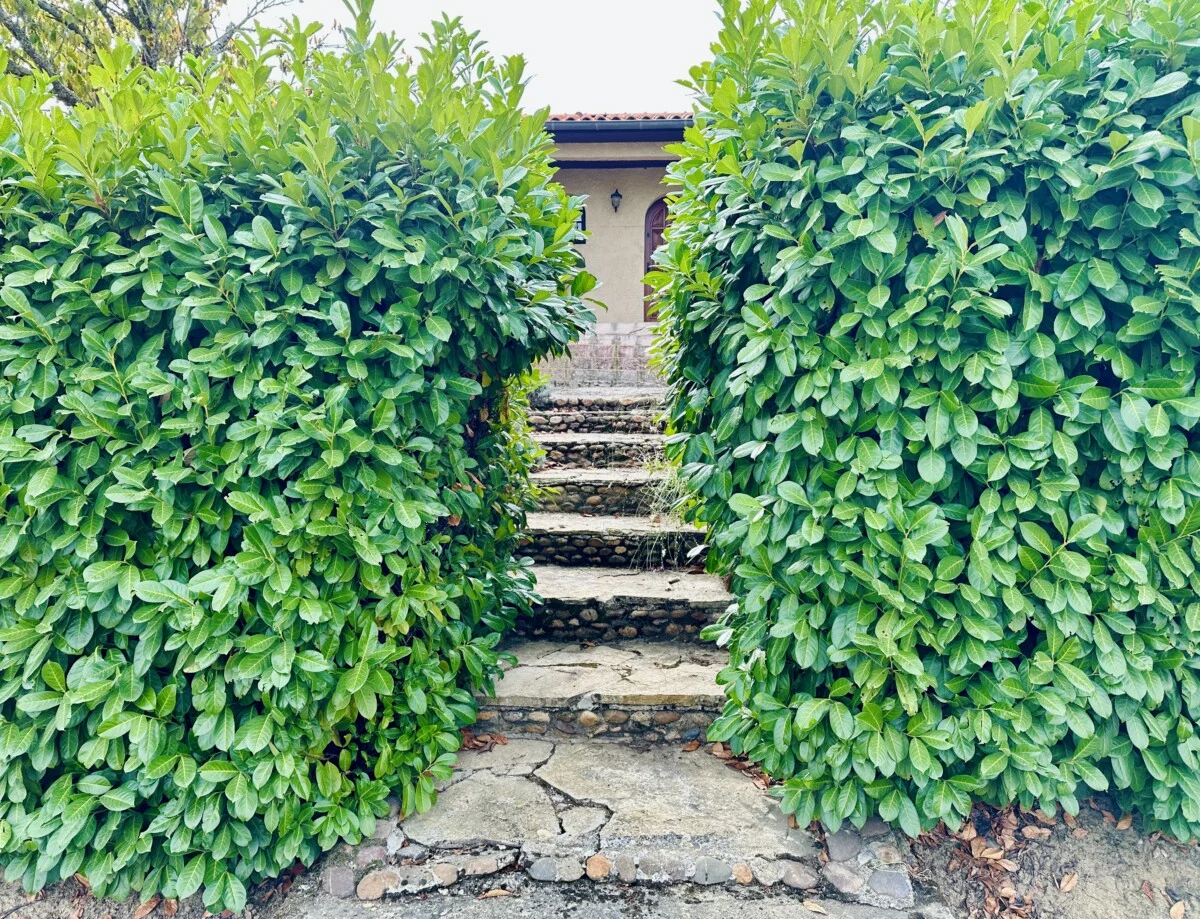
- First, you should consult local legislation that often details height restrictions and, more rarely, species restrictions. In our case, our existing trees are exempt from height restrictions but new plants (including replacements for our existing trees) are not.
- Space is also a primary consideration. In addition to the overall space you have available, you should consider how much space each plant will need at maturity. This will help you avoid crowding or gaps and ensure optimal growing conditions for your new plants as they mature.
- You should determine how much sunlight your new plants will receive. Before planning any landscape project, I take a time-lapse photo to track the sunlight over the course of the day. By doing so, I can determine which plants are best suited for a particular space. Alternatively, you can set a timer to remind you to manually take a photo throughout a day. Understanding the amount of sunlight available will help you decided if you should choose sun-loving or shade-tolerant plants.
- Irrigation is also an important consideration. Your new plants will require regular watering during the first year or more until their roots are established. Planning for this ahead of time can help avoid watering gaps during this crucial time.
Now, let’s move on to the list.
Hedges & Shrubs
English Laurel (Prunus laurocerasus)
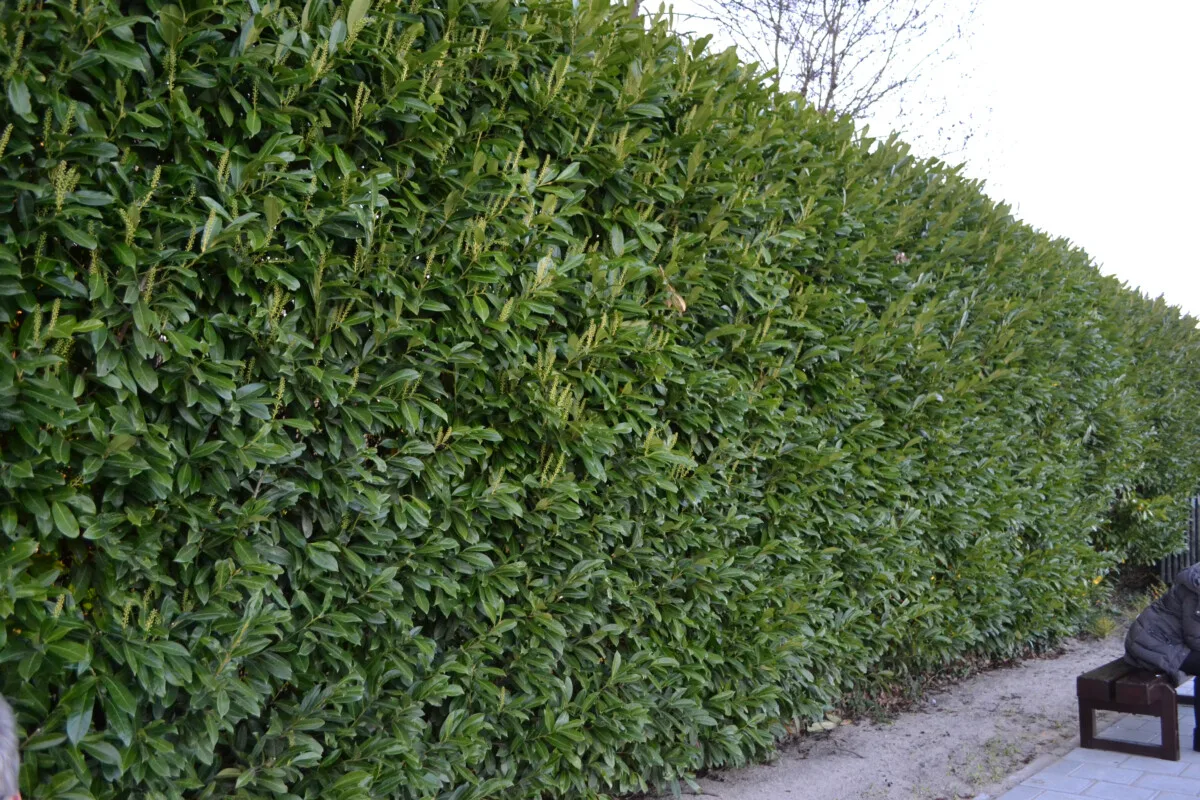
Starting with a classic, English laurel (Prunus laurocerasus) is a popular evergreen choice. Also known as Cherry laurel, this hedge boasts rich, glossy leaves. It is a full, thick plant that can provide a distinct line of separation between you and your neighbor. It easily acts as a natural fence or can hide an unsightly fence.
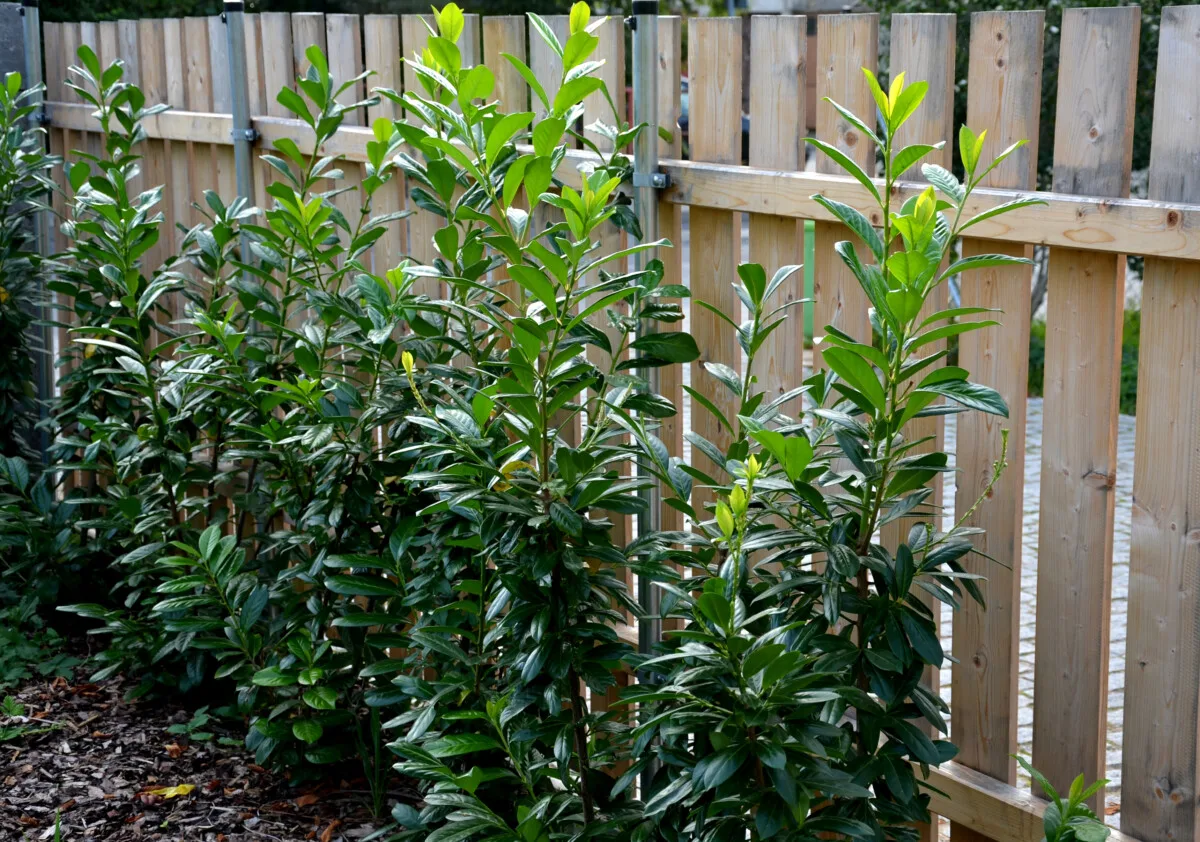
English laurel is an easy plant to grow. It tolerates both full sun and partial shade and doesn’t require regular fertilization. In addition, it is resistant to pests and is extremely drought-tolerant once established.
The downside is that English laurel grows quickly and requires pruning to keep a tidy appearance. Also, this plant can be bulky for smaller home lots and take up too much precious space.
Arborvitae (Thuja occidentalis)
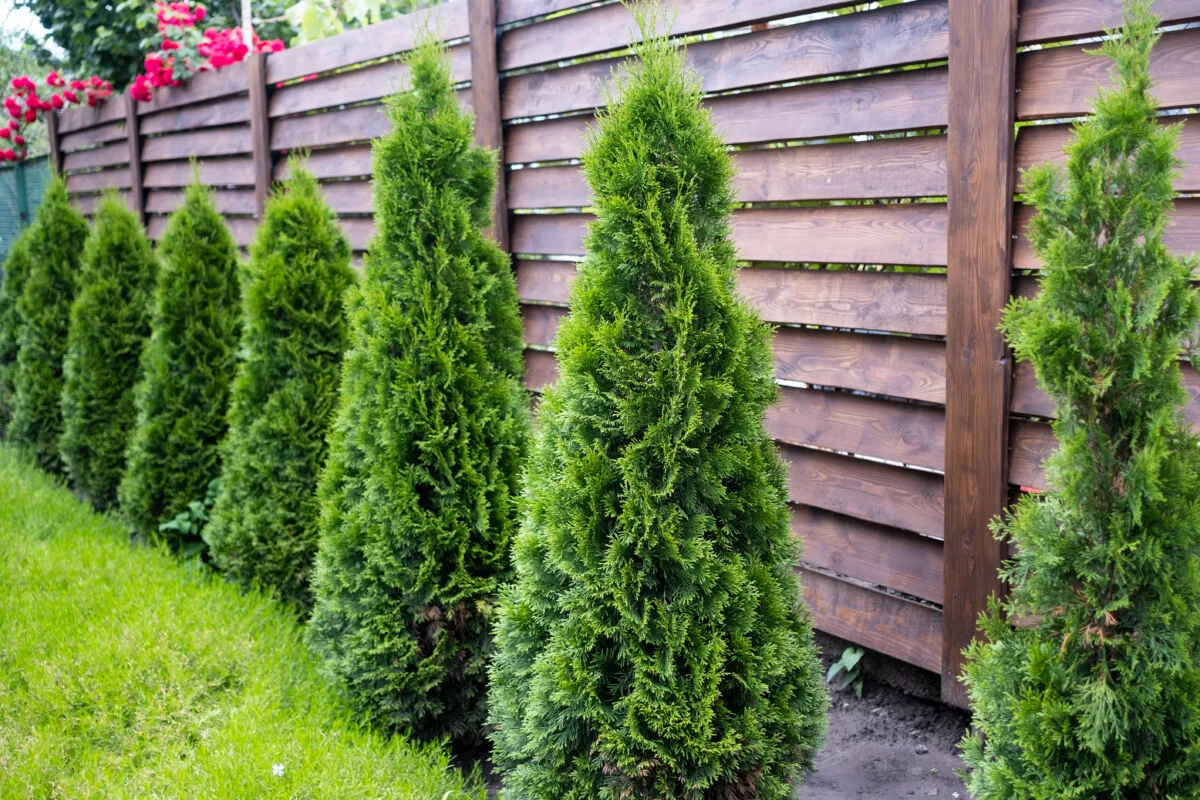
Another favorite choice for evergreen hedges is Arborvitae (Thuja occidentalis). Also known as Northern white cedar, this plant is sought out for its versatility.
For large properties not encumbered by height regulations, arborvitae can be grown as individual trees, creating an attractive fence line. They can also be trained as hedges and individual shrubs can be used for topiary.
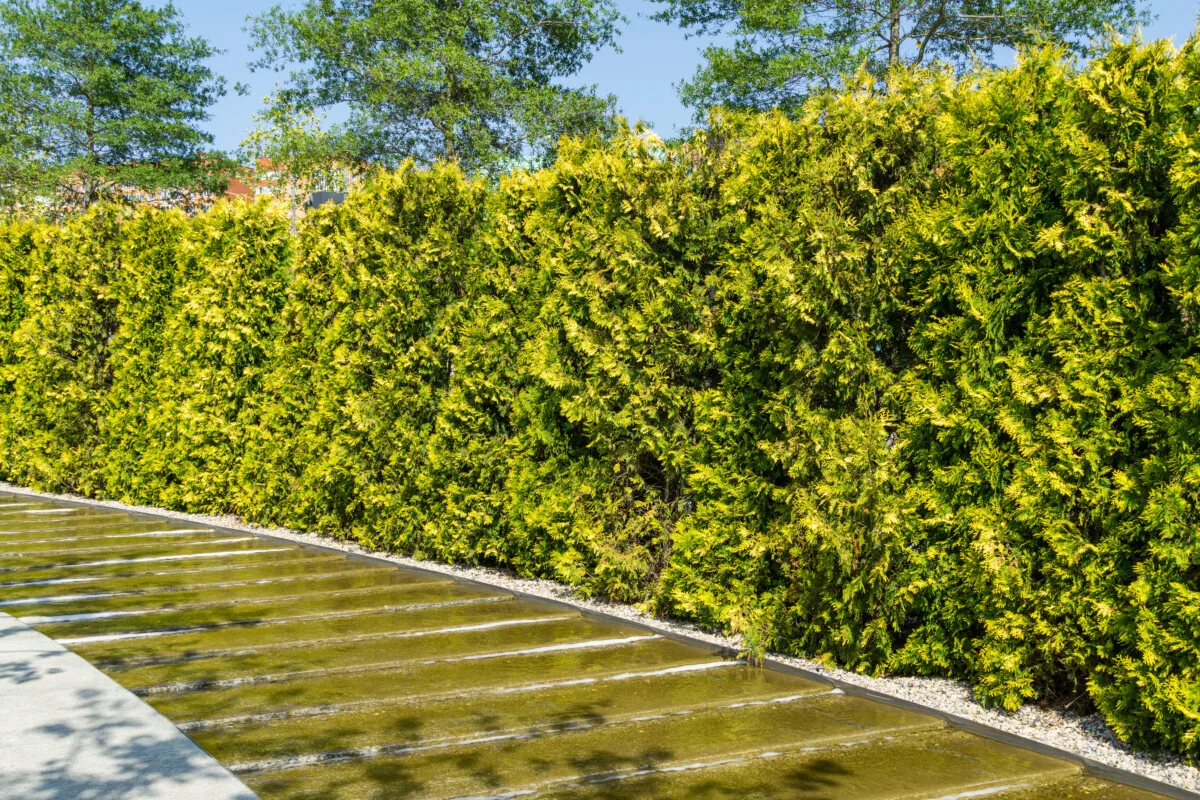
Arborvitae can tolerate cold weather and grow best in Zones 3-7. The downside of these plants is there are a variety of pests and diseases that affect them.
Forsythia
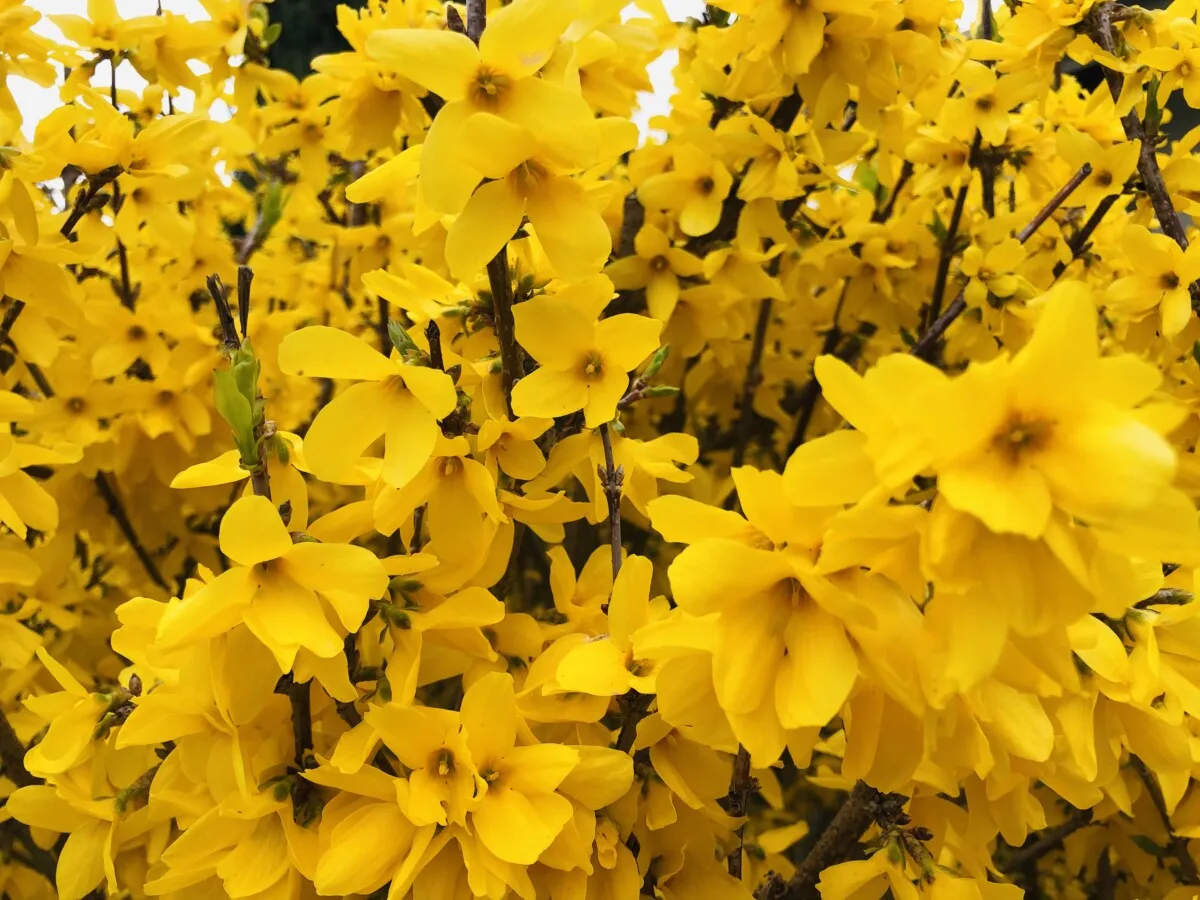
Forsythia is another popular choice. Although it isn’t evergreen, forsythia makes up for this shortcoming with the vibrant yellow blooms that welcome in spring. For a period of 3-4 weeks each year, forsythia appear to glow.
Aside from their blooming period, they are unremarkable green bushes that can provide a backdrop to plants that bloom later. They are one of my personal favorites as accent plants for the garden, but they can be trained as hedges too.
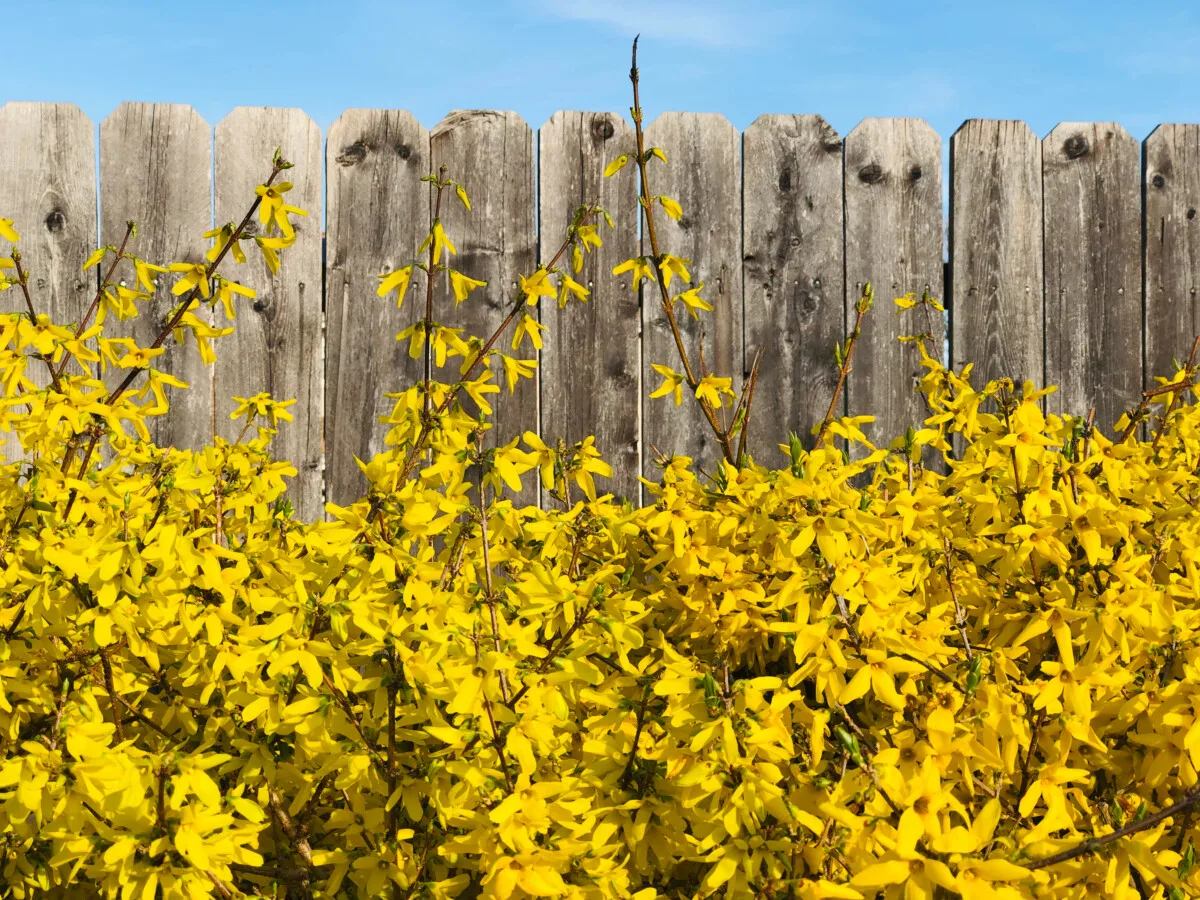
Forsythia thrives in Zones 4 to 9 and is drought-tolerant once established. They don’t need regular fertilization to thrive and are resistant to pests and diseases.
The downside of forsythia is that it grows fast and requires regular pruning. I prune mine twice each year. Like English laurel, it is also a bulky plant that might not be a good fit for smaller spaces.
Rosemary or Lavender
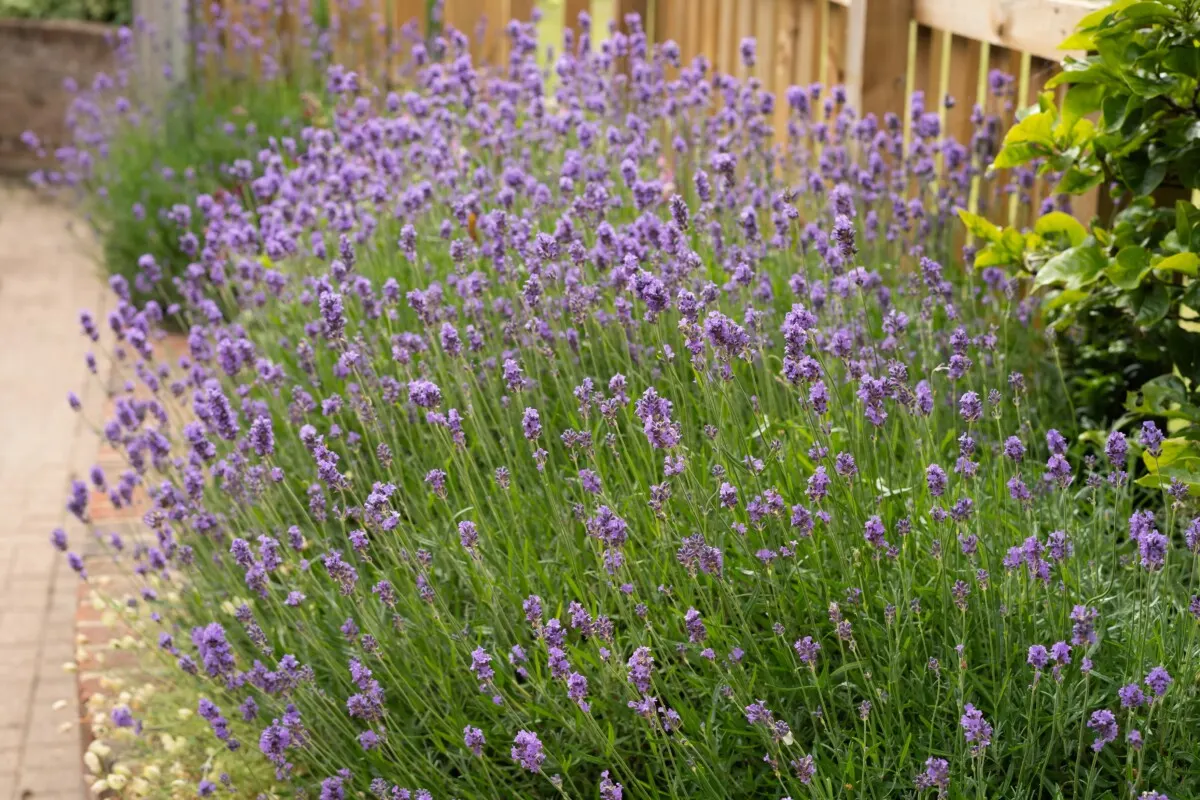
If you’re looking for an evergreen hedge that is a bit unorthodox, certain herbs can be a good choice. In Morocco, for example, hedges are often made of rosemary and lavender. It will take a few years for them to fill in completely and grow dense, but in the meantime, they will add a pleasant fragrance to your garden that you won’t regret.
Lavender grows best in slightly alkaline soils and is hardy in Zones 5-9. Plant lavender 12-18 inches apart for a thick hedge.
Rosemary is a warm-weather plant and is only hardy in Zones 8-11. It prefers neutral to slightly alkaline soil, and like lavender, it should be planted 12-18 inches apart to form a thick hedge over time.
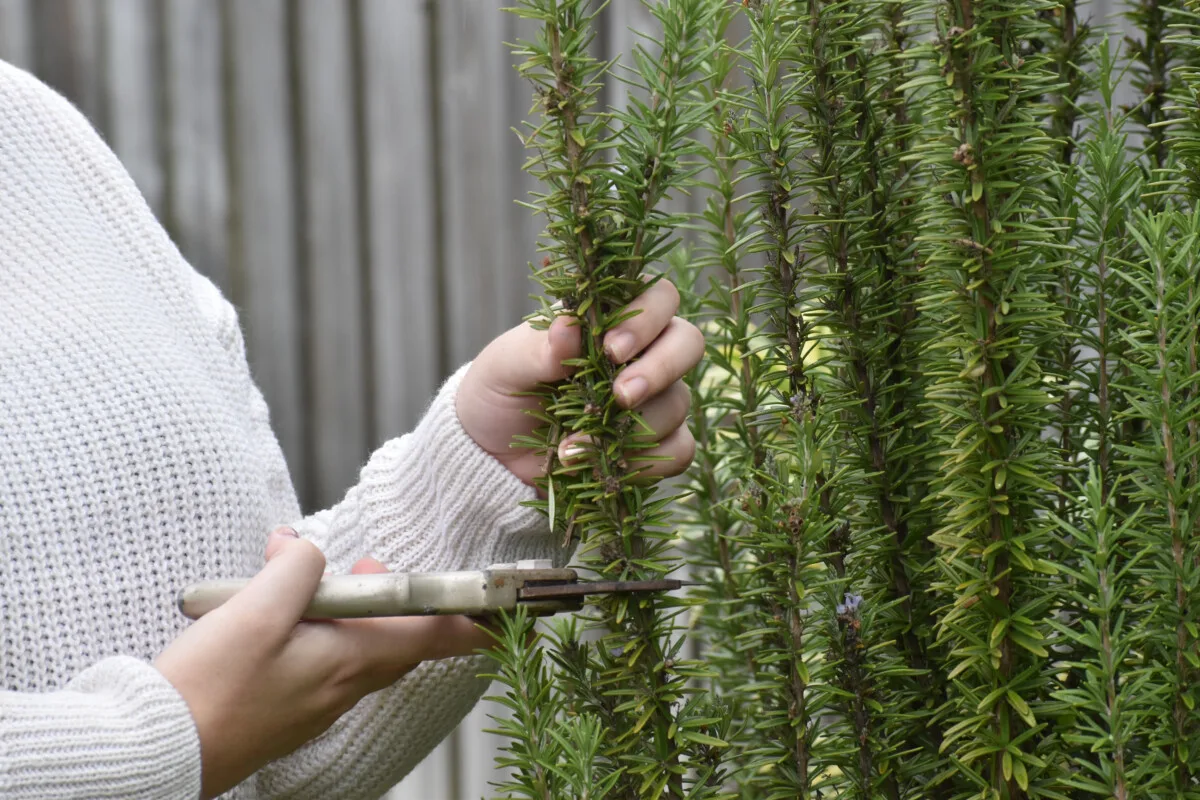
Vining & Climbing Plants
Bougainvillea
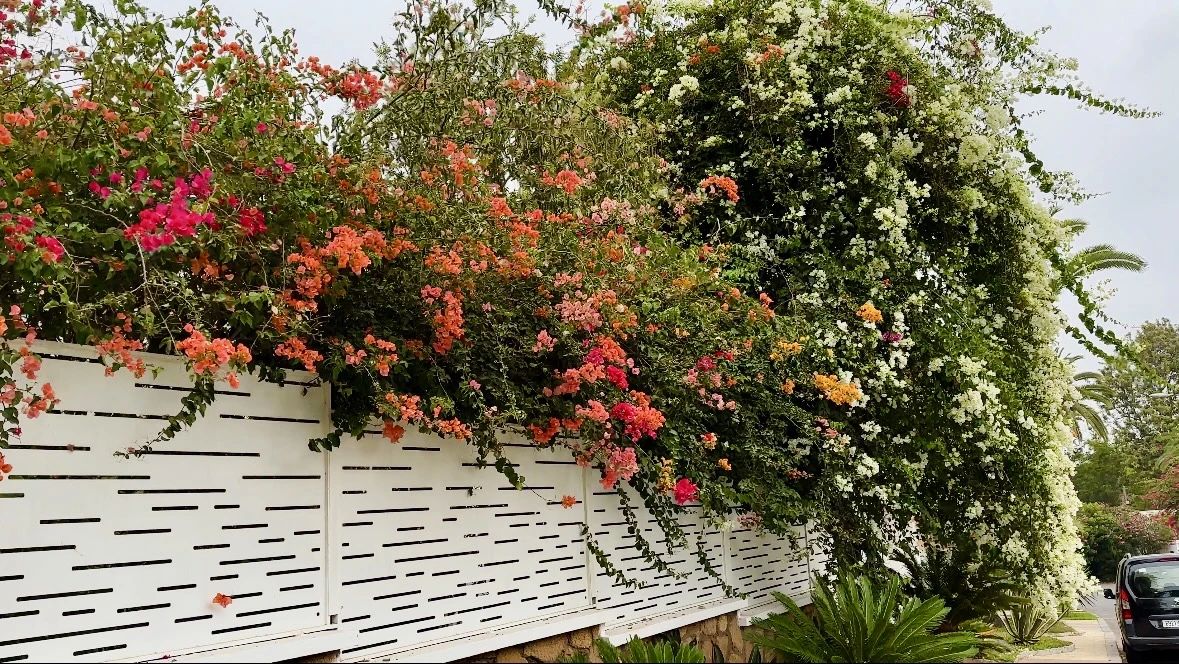
If you’re fortunate enough to live in Zone 9 and up, Bougainvillea is gorgeous choice for hiding an ugly fence or adding a beautiful display of color in your garden. It thrives in full sun and requires regular fertilization.
Once established, it’s drought tolerant. However, it flowers best when it is watered deeply and then allowed to dry out between waterings.
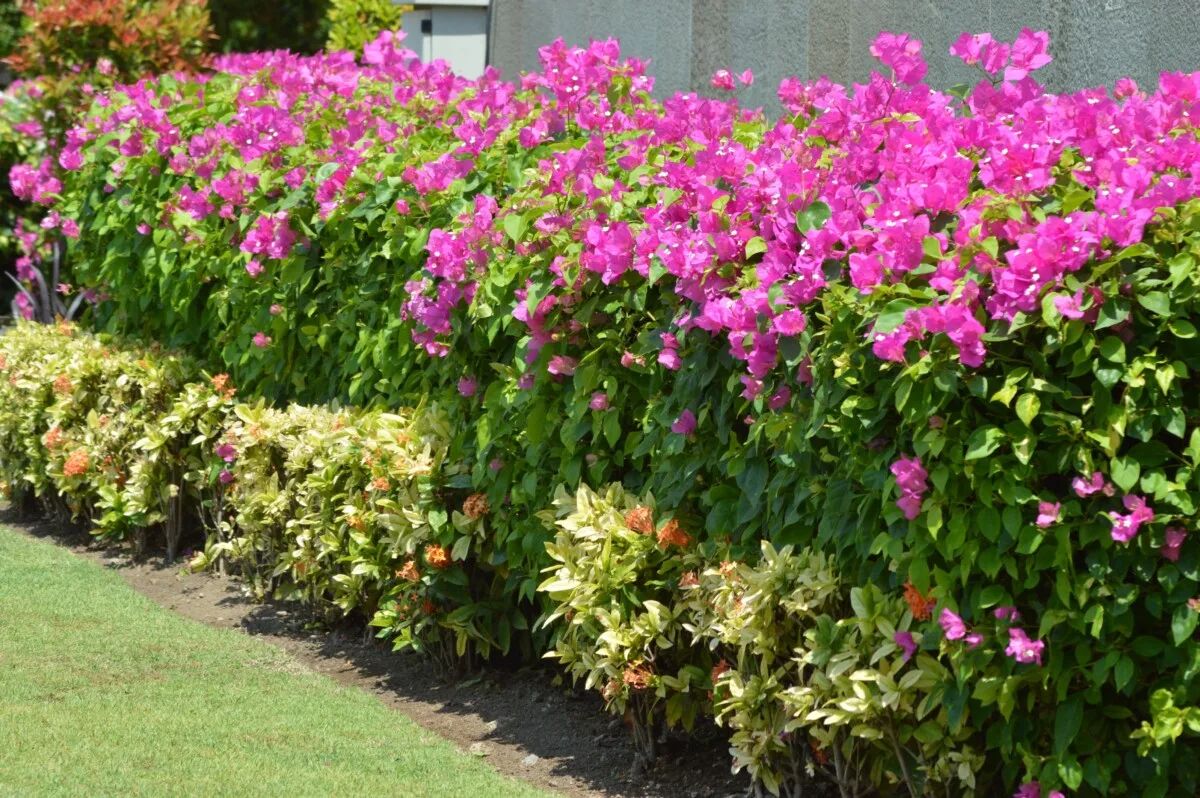
Wisteria
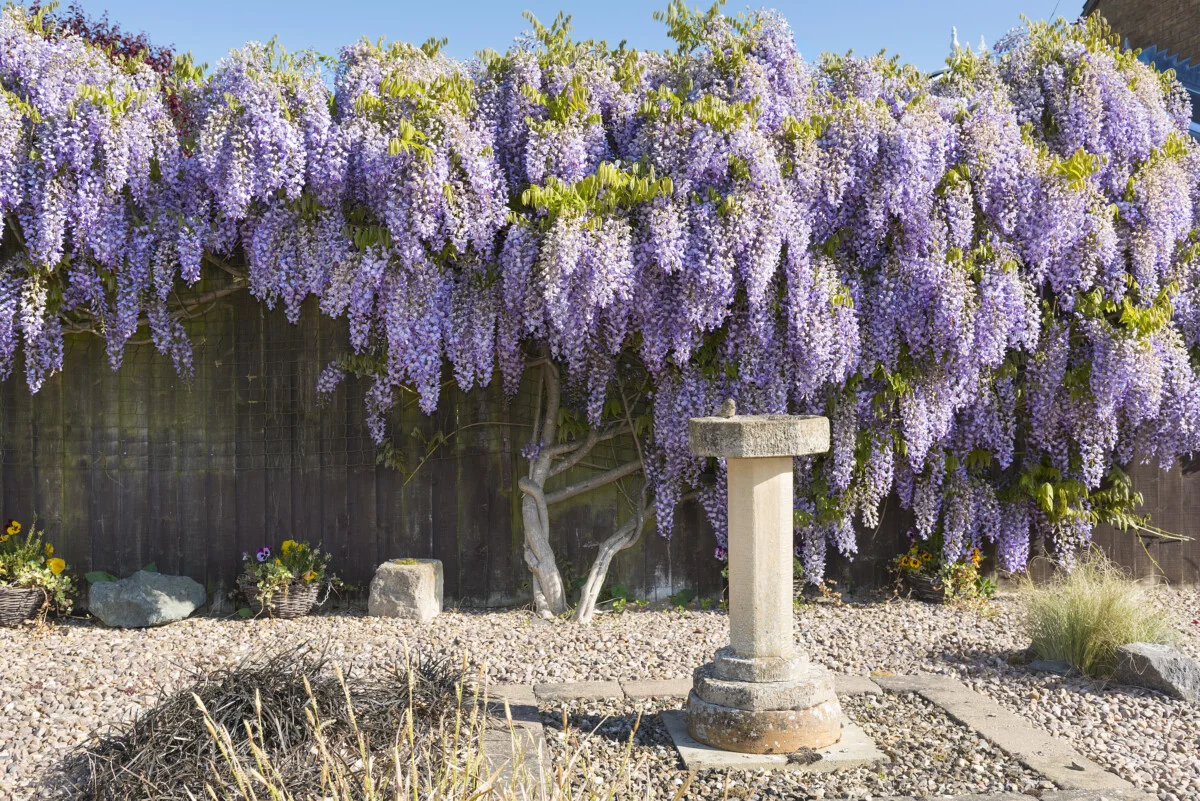
If you’re looking for a romantic ambiance in your garden, Wisteria is the way to go. It can be trained to decorate a fence line or cascade from an arched trellis. Once established, its massive purple flowers turn heads and incite envy among neighbors.
Like most vining plants, wisteria is not evergreen. During winter months, its summer glory fades quickly revealing a woody trunk and gnarled vines from which new growth will begin the following spring.
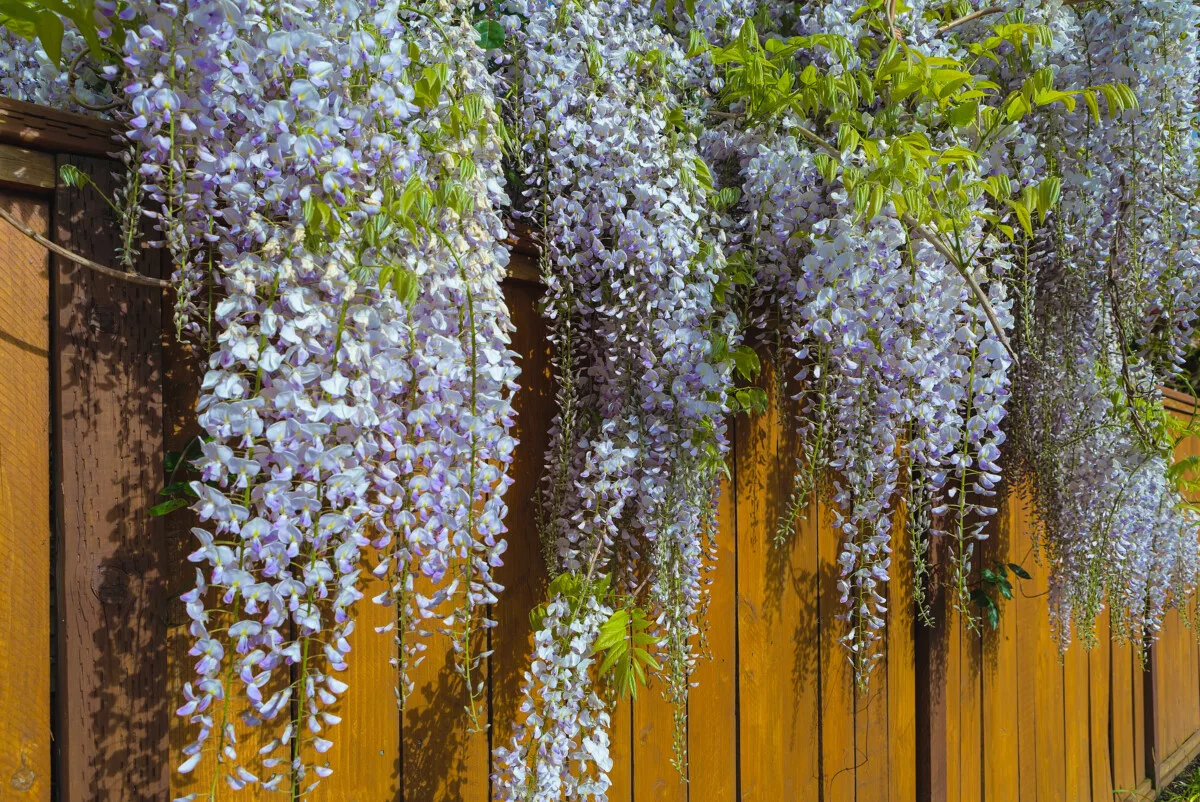
Wisteria can take years to establish, so this is not an ideal plant if you need a quick fix. It needs full sun too. Most varieties are cold hardy in Zones 4-9. Although it doesn’t require frequent fertilization, it does need to be pruned regularly for optimal flowering.
Honeysuckle (Lonicera caprifolia)
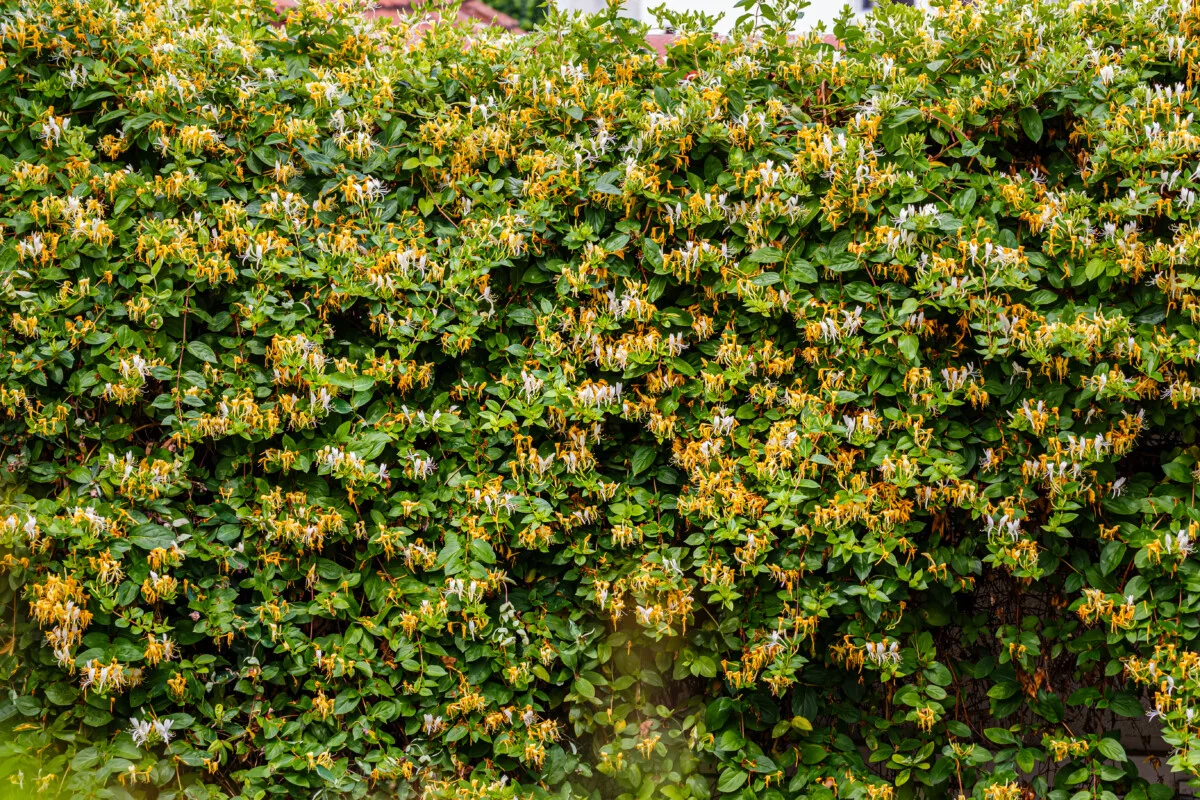
If you’d like a scented vine, nothing can beat Honeysuckle (Lonicera caprifolia). I have a mature honeysuckle on a trellis at the edge of my vegetable garden. I cut it back once a year to keep it manageable and am rewarded in early summer with a sweet scent that is somehow reminiscent of childhood.
Honeysuckle prefers full to partial sun and will not flower well if it doesn’t receive enough sunlight. It’s easy to grow, drought-tolerant once established, and does not need regular fertilization. In fact, I don’t think I’ve ever fertilized mine, and yet it blooms profusely each year and has never had disease or pest issues.
Trumpet Creeper or Trumpet vine (Campsis radicans)
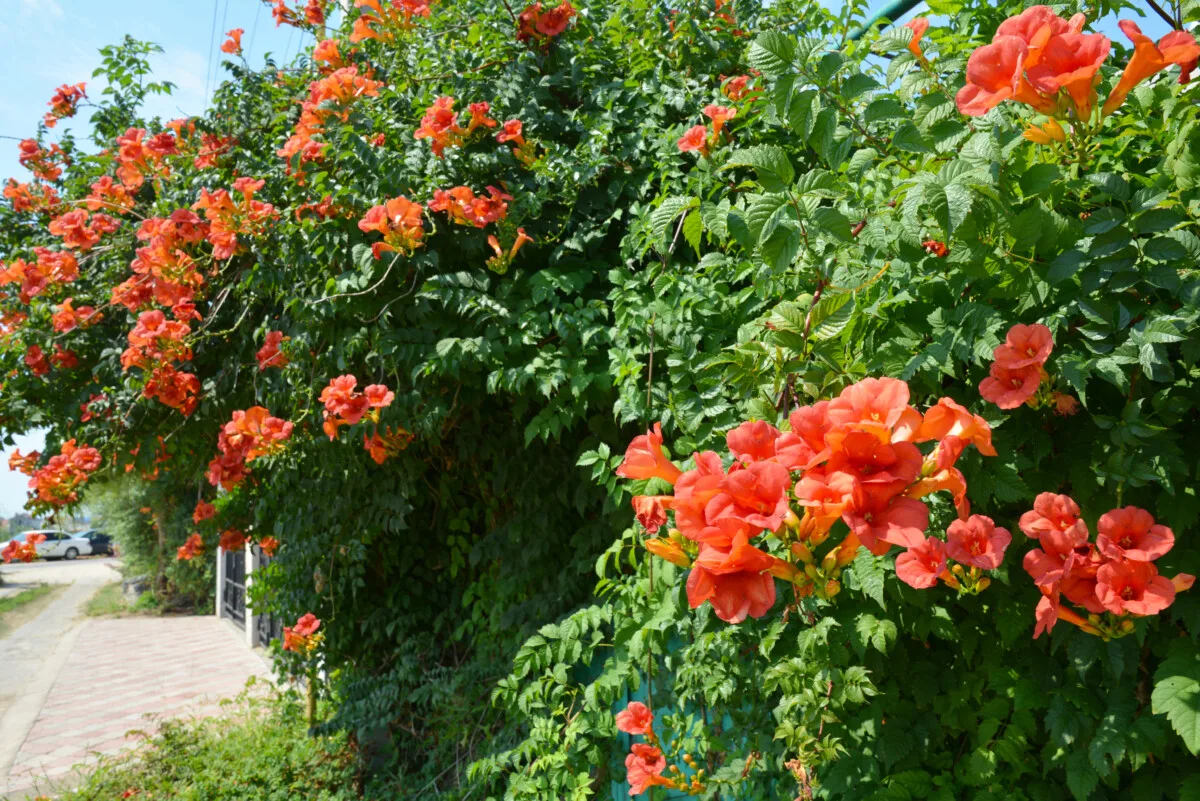
If you’re looking for a dramatic effect, Trumpet Creeper or Trumpet vine (Campsis radicans) is a plant that puts on a show. With its vibrant orange or red trumpet-shaped flowers, it is one of my favorite plants to see in summer.
Trumpet Creeper requires more work than the other vining plants I’ve listed, so only choose this plant if you have the time to maintain it each year. Although it is drought-tolerant once established and only needs an occasional application of fertilizer, it is an aggressive climber and can be invasive if not pruned. It requires several hours of direct sun each day and is hardy in Zones 4-9.
Grape Vines
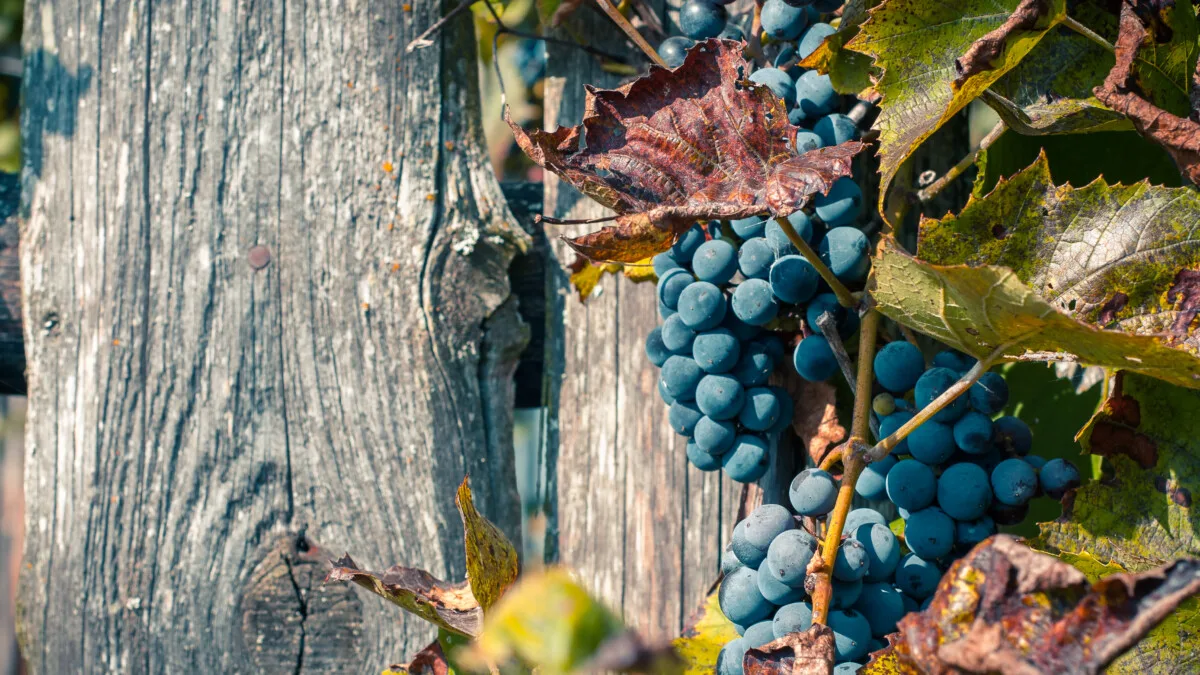
For a vining plant that can provide food and cover an ugly fence line, grape vines might be right for you. One of my neighbors grows these along his back privacy fence, and if they’re lucky, neighborhood children sometimes discover a ripe cluster of grapes that has escaped confines and is there for the taking.
That said, I live in France and grapes are notoriously easy to grow here. Depending on the climate in your area and the pest pressure, grape vines can be a dream or a nightmare. Check with your garden store to see which varieties do well in your area.
In general, grape vines need full, direct sunlight (minimum 6 hours per day). They must be watered regularly during their growing season and require pruning for optimal fruit production. If you get it right, though, you’ll be rewarded with juicy, fresh grapes straight from your own fence line!
Have you spotted a few plants that would be perfect for that unsightly fence or along your property line? Remember to consider conditions such as your local restrictions and speak to your garden store professional to determine the varieties best for your area.
Whether you’re creating your garden oasis or trying to get some privacy from a nosy neighbor, these nine shrubs, hedges, and vining plants are sure to add beauty and privacy to your garden or backyard.
